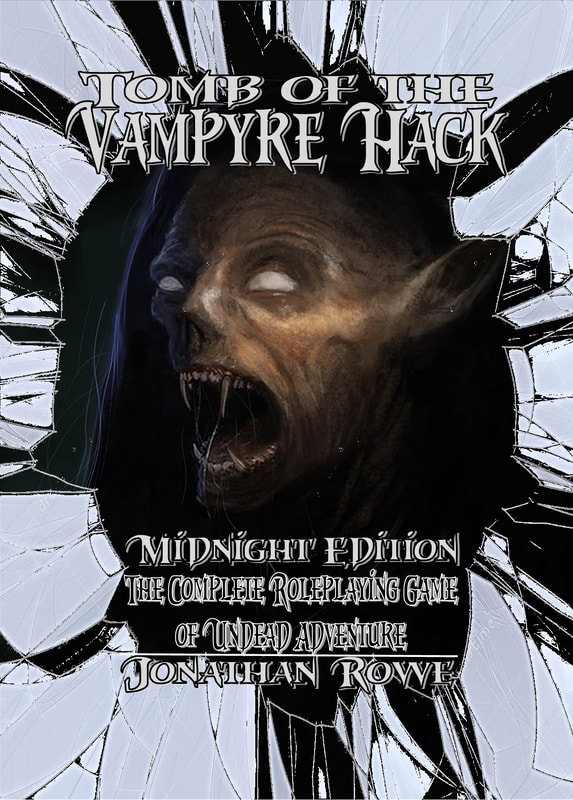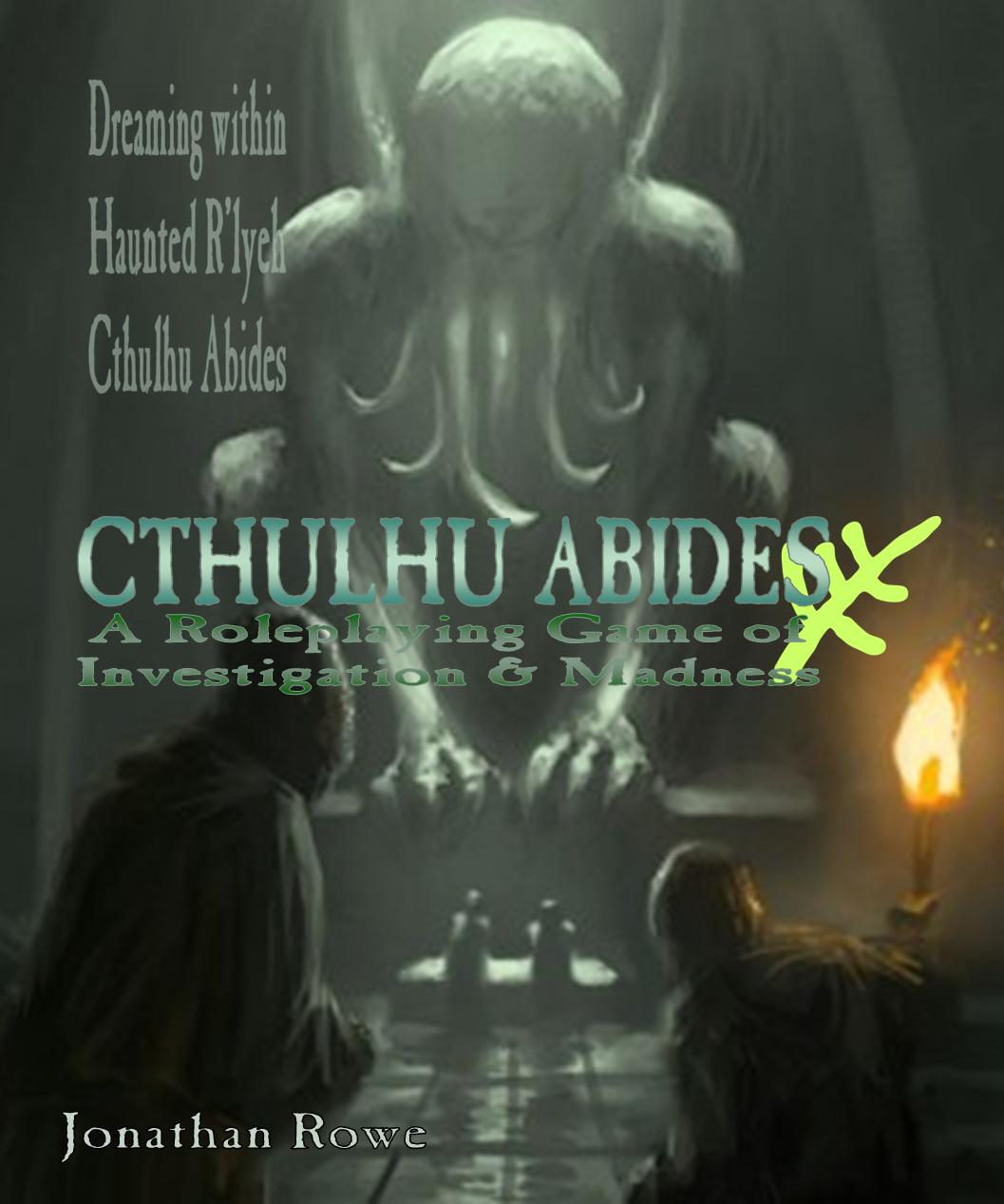|
There are two approaches we can take to Lew Pulsipher's controversial Necromancer class from White Dwarf 35 (1982). One is a root-and-branch revision of the class, trying to salvage its core characteristics and present them without the one-note schlock and misogyny. The other is to treat it simply as a type of Cleric. I'm going to look at both options. Lew's Necromancer was in terrible taste (or, to use modern terminology, it was "problematic") but it was also flawed as a character class because it was overly-directive. I'd like a Necromancer to be an anti-hero instead of an outright villain. A player should be able, if they choose, to play a Necromancer as someone who hunts down and captures or euthanises the Undead. You could be trying to bring your lover back from the dead or cure them of vampirism. You could be seeking dark wisdom. The point is that Necromancy should come at a terrible cost but the player should be able to choose the ultimate goal and it shouldn't automatically be an evil one. The Necromancer for White Box Necromancers are students of the death and undeath: they seek to master death and transcend it, but at great cost. Some are merely ghoulish zealots for the powers of Death but others are dark mystics seeking to understand mysteries of death and others might have a personal agenda, such as breaking the curse of undeath. Necromancers are usually Human but at the Referee's discretion Half-Orcs can advance as Necromancers up to 6th level or Dark Elves up to 8th. Necromancers must be Neutral or Chaotic. Their Prime Attribute is Wisdom, representing strength of will and they add +05% to earned XP if this is 15+. Armour & Weapon Restrictions Necromancers can wear leather armour and carry shields. They can use one-handed weapons in combat (not bows). They can use magic items available to anyone, but also cloaks of protection, magic gauntlets and magic horns. They can use any items for Magic-Users or Clerics that summon or control Undead. Necromancers advance slower than Clerics but faster than Fighters. Their Hit Dice are only slightly better then Magic-Users. Their To Hit Bonuses start well (better than Clerics) but then plateau and end up like Magic-Users. They have terrible Saving Throws. This is a class that is fairly robust at lower levels but gets overtaken by other classes later on, which is why they rely on Undead muscle. Compel Undead Necromancers can compel Undead to do their bidding. This is done in the same way as a Cleric turning undead (Table 4, White Box p13). Compulsion can only be attempted once for a group of Undead monsters. If successful the group serves the Necromancer, although more intelligent Undead may do so with complaint and without enthusiasm. A 'D' result means the creatures are automatically compelled to serve the Necromancer. Compulsion normally means that the Undead allow the Necromancer (and companions) to pass in safety. If they are intelligent, the Necromancer can demand a piece of information from them which they must offer truthfully (although it may be cryptic in phrasing). If there are other enemies present, the Undead can be compelled to fight them. However, Undead cannot be Compelled to leave their graves or lairs and accompany the Necromancer. This power is similar to Chaotic Clerics Turning Undead (White Box p13) except that it is a bit more circumscribed but can be effective at lower levels (the Necromancer doesn't need a 'D' result). The Referee should give intelligent Undead credit to mislead or obstruct the Necromancer in some way. However, since this is their signature power, if the Necromancer succeeds in the roll, the Undead should obey them. Reward players who make clear and achievable demands of Undead monsters then leave them to their cursed existence. If players try to extract more favours or information, allow the Undead to summon help, escape or create other sorts of trouble. Necromantic Shield The Necromancer is immune to the special powers (paralysis, level drain, charm, etc) of Undead that she could turn on a 10+ result. For example, a third level Necromancer cannot be paralysed by Ghouls and an eighth level Necromancer cannot be drained or charmed by weaker Vampires. This is a significant power, although it doesn't do much until the Necromancer reaches third level (most 1-2 HD Undead monsters don't have special abilities). At higher levels it opens the possibility for Necromancers to be effective vampire-hunters or mummy-slayers, since they are immune to effects like level draining, charm, fear and disease. Necromancy The Necromancer has an extra stat – Necromancy (check his last column in the advancement table). This is a pool of points and the Necromancer may spend his Necromancy points to summon and control the dead and the Undead. Speak With Dead: The Necromancer can spend Necromancy points to speak with a dead person’s spirit, asking one question per point spent. The Necromancy must be at the dead person’s grave or corpse or else possess an item important to the dead person in life. A particular person’s spirit can only be summoned once. Raising Undead: The Necromancer spends Necromancy points equal to the Undead’s Hit Dice (rounded up). There must be corpses to raise the Undead out of and the Undead’s total Hit Dice cannot exceed the Necromancer’s level (so a third level Necromancer could spend 1 point to raise 6 Skeletons or 3 points to raise a single Wight). If the Necromancer achieves a 'D' result on the Cleric Turning Undead table, twice as many Undead monsters are raised (so a fifth level Necromancer could spend 1 Necromancy point to raise 20 Skeletons or 10 Zombies). The Undead are automatically considered Compelled to obey but will not leave the vicinity of the corpses they rose from. Rule Undead: The Necromancer permanently spends Necromancy points equal to the Undead’s Hit Dice. This causes Undead who have been successfully Compelled to fall under the Necromancer’s Rule. They will leave their lair or grave and follow the Necromancer as a henchman so long as their Hit Dice do not exceed the Necromancer’s level (so a 4th level Necromancer could spend 4 permanent points to rule a single Wraith or two Ghouls). If the Necromancer achieves a 'D' result for on the Cleric Turning Undead table then twice as many Undead may be Ruled per point spent. Necromancy points spent on ruling Undead are not recovered even if the Undead are destroyed. This uses the point-based system that Szymon Piecha introduced for Paladins in Expanded Lore. With 2 Necromancy points, a first level Necromancer can ask a couple of questions of the dead or raise up a few Skeletons or a couple of Zombies. Higher level Necromancers will be tempted to Rule over useful Undead like Wraiths or Vampires but of course they permanently lose the Necromancy points they invest in creating Undead henchmen. Ghastly Ritual Necromancy points spent on Speaking with the Dead or Raising the Undead can be recovered through a Ghastly Ritual that the player decides upon. This ritual restores all spent Necromancy points (except those invested permanently in Ruling Undead) but at a cost:
This is how you get those Necromancy points back, but you need to choose your Ghastly Ritual carefully because it defines your character's progress. If you choose Antisocial Rituals you will strip away Charisma; Unhygienic Rituals strip away Constitution. Life Drain might seem like a better option if you have a lot of Hit Points but it will weaken you in the long run. Higher level Necromancers might find it easier to sacrifice magic items. "Victim" is here for Necromancers determined to be that guy, but at least you get to choose your victim type to reflect your character concept. It could be murderers or abusers or people who (according to some views) deserve a grisly end. It doesn't have to be virginal young women. Saving Throws Necromancers save at +2 vs Death or the powers of Undead (but not Demons). Establish a Mausoleum At 9th level, the Necromancer gains the title 'Lord of Life and Death' (or something equally camp) and can build a Mausoleum, which is a sort of temple-laboratory dedicated to exploring death. He will attract a group of strange and/or desperate servitors – including Clerics of dark cults, junior Necromancers and enterprising Undead - who will serve him in pursuit of their own sinister agendas. Trauma Necromancers gain no Trauma from the appearance of Undead, from searching through corpses or bones, from the deaths of companions or from being alone in dark or dangerous places. However, Necromancy is traumatic for adventuring companions, who gain Trauma just from having Undead servants accompany the party. If a Necromancer turns up at the start of an adventure with Ruled Undead sidekicks, companions gain 1 Trauma per type of Undead she has with her. If she Rules and recruits more Undead during the adventure, companions gain more Trauma each time she does it. Other Necromancers and Clerics do not gain Trauma from seeing Undead. Necromancer Feats
This is where you customise your Necromancer (and remember Humans get a free Feat at first level). If you sink a lot of Necromancy into Ruling Undead and you want it back, then Soul Putrefaction restores all the points but you develop an insanity. If you're trying to bring back your lover or friend, you can Raise them as Undead with Resurrectionist then making them mortal again with Vivamort, but the Necromancy expenditure will be pretty steep. Greater Ritual gives you some flexibility in how you reclaim your Necromancy points: at higher levels, you might want to swap over to sacrificing minor magic items. Army of the Dead and Damnation let you follow the Undead Super-Villain route while Deathsight helps with dungeon exploring. Necromancers as White Box Clerics Rather than giving Necromancers a class of their own, you can treat them as Clerics serving a god or goddess of death and undeath (Hecate, Hades, Hel, Arawn, Morrigan, Mictlantecuhtli, Anubis, Sutekh, keep going). As Clerics, they wear armour and turn Undead normally until they get a 'D' result whereupon they can control Undead instead of repelling them - and can control a number of Undead equal to their level at any given time. If you use Expanded Lore, then the God's Weapon ability lets a Necromantic Cleric use some horrid blade but you could substitute it for a Necromancy power that lets them command Undead on a successful roll to turn them and allows a 'D' result to mean that the Undead only count as having half their Hit Dice for purposes of calculating how many the Necromantic Cleric can dominate. Some of Lew Pulsipher's Necromancer abilities can be converted into spells that are only available to Necromantic Clerics: Speak With Dead Spell Level: C1 Range: 10ft Duration: 1-6 questions The caster can asks 1d6 questions of a corpse, which it will answer truthfully if it knew the answer when it was alive. Animate Dead Spell Level: C2 Range: 30ft Duration: Indefinite The caster can raise dead bodies as 2d4 Skeletons or 1d4 Zombies under her control. The Undead will serve until destroyed or turned by another Cleric or the party leave the dungeon/complete the adventure. (Optional) Using this spell causes adventuring companions who are not Clerics to gain 1 Trauma. Create Skull Guard Spell Level: C3 Range: 30ft Duration: Indefinite The caster can transform 1d6 skulls into Skullguard Undead monsters that will guard the area where they are raised (and patrol up to 60ft distance). Necromantic Bell Spell Level: C4 Range: Caster Duration: 1 hour The caster creates a bell inscribed with a person's name. When it is rung, the person's spirit appears. The caster can ask questions or seek advice. The dead person is not under the caster's control but must be negotiated with and might have requests of their own in exchange for their wisdom or information. After the summoning, the bell shatters on a roll of 1-4 on a d6 and the spirit canmnot be summoned again. Zombie Army Spell Level: C5 Range: 240ft radius of caster Duration: 1 day The caster can animate a huge number of corpses from a graveyard or a battlefield, creating 100-600 (10d6 multiplied by 10) Zombies who will obey his commands until sunrise. (Optional) Witnesses to this guesome event will gain 2 Trauma if they are not Necromancers or Clerics. Skullguard
Necromantic Clerics can create Skullguards using a 3rd level spell. The Necromancer character class can Raise Skullguards from ordinary skulls but they count as 4HD creatures (4 Necromancy points to Raise them and a fourth level Necromancer is required to Raise just one Skullguard but an eighth level Necromancer will raise 4 with a 'D' result).
2 Comments
16/5/2020 12:05:00 am
If you want the Necromancer to be an anti-hero, you may as well start from scratch. It's the last thing I would expect from the Necromancer I wrote.
Reply
Jonathan Rowe
16/5/2020 01:25:30 pm
Lew, I think you created something rather more compelling than you realised! Since reading your Necromancer in 1982 I've wanted him to feature in my games but as an antihero or Faustian figure. And if that involves overhauling him then so be it. You're not the first person to create a monster so charismatic that fans wanted to treat him has a hero! Look at Hannibal Lecter!
Reply
Leave a Reply. |
30 Minute Dungeons
Essays on Forge
FORGE Reviews
OSR REVIEWS
White Box
THROUGH THE Hedgerow
Fen Orc
I'm a teacher and a writer and I love board games and RPGs. I got into D&D back in the '70s with Eric Holmes' 'Blue Book' set and I've started writing my own OSR-inspired games - as well as fantasy and supernatural fiction.. Archives
July 2024
Categories
All
|





 RSS Feed
RSS Feed
























